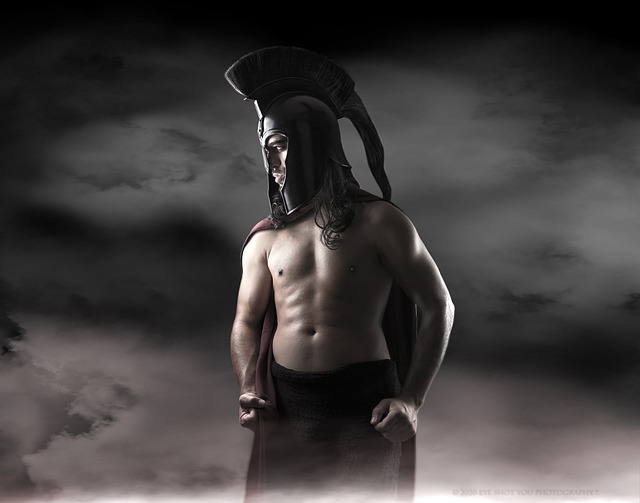Sparta and Athens were two city-states in ancient Greece with distinct differences in government, economy, military tactics, daily life, religion, arts and education. While Sparta was characterized by its oligarchic government system which placed emphasis on a strong military force and the suppression of individuality for the greater good of society; Athens had a democratic government system that focused more on intellectual pursuits such as philosophy and art.
The History of Sparta and Athens
Sparta and Athens were two of the most significant city-states in ancient Greece. Both cities had a rich history that shaped their distinct cultures, practices, and beliefs.
Sparta, known for its strict military regime, was founded around 900 BC by Dorians who invaded the Peloponnese peninsula. Its people believed in living a simple life with no luxuries or comforts. On the other hand, Athens emerged as a cultural center around 1400 BC and is known for its contributions to art, literature, philosophy and democracy.
Athens became an independent city-state after overthrowing its ruling class in 508 BC but still faced many challenges such as the Persian invasions. In contrast, Sparta was successful in repelling Persian attacks due to its powerful army trained from birth.
Despite their different histories and circumstances that led to their rise into power – each city played an essential role in shaping Greek civilization forever more
The Governments of Sparta and Athens
The governments of Sparta and Athens were vastly different from each other.
Sparta was an oligarchic society where a small group of elite citizens held most of the political power. This group, known as the Council of Elders, consisted of 28 men over the age of 60 who served for life. The council made all major decisions regarding war and foreign policy.
In contrast, Athens had a democratic government where all male citizens had a say in decision-making through gatherings called assemblies. These assemblies met regularly to discuss matters such as laws, budgets, and military strategy.
Another key difference between the two governments was their approach to education. In Sparta, boys were sent away at age seven to begin military training in order to become strong soldiers for their city-state. Meanwhile, Athenian boys received a more well-rounded education that included literature and philosophy in addition to physical training.
While both Sparta and Athens were powerful city-states in ancient Greece, they differed greatly when it came to their systems of government and how they approached leadership and decision-making processes within their societies.
The Economies of Sparta and Athens
The economies of Sparta and Athens were vastly different due to their respective societies’ priorities.
In Sparta, the economy was centered around agriculture with the helots (enslaved population) responsible for farming while Spartan citizens focused on military training. This allowed them to develop a self-sufficient society that did not require trade or commerce to sustain itself.
On the other hand, Athens had a thriving economy built on trade and commerce. The city-state was located near major trading routes in the Aegean Sea allowing it to become a center of trade for goods such as olive oil, pottery, and silver. Athenians also developed a strong navy which further contributed to their economic success by enabling them to protect their trade interests.
While both city-states relied on slaves or conquered people for labor, Athens practiced slavery more extensively than Sparta did. Slaves were used in various trades such as mining and manufacturing contributing significantly to Athens’ economy.
While both societies shared similarities in terms of using slave labor they differed greatly when it came down to how they generated wealth – one focusing on agriculture while the other thrived off commercial ventures.
The Military of Sparta and Athens
(Image by Wolfgang Eckert from Pixabay )

The military was a significant aspect of both Sparta and Athens. However, the two city-states had distinct approaches towards their armed forces.
Sparta’s military system was highly organized and efficient. The focus of the Spartan army was on infantry, with hoplites being the primary soldiers. These soldiers were trained from an early age to become skilled fighters, resulting in a formidable force that could stand against any enemy.
Athens’ military approach differed significantly from Sparta’s as it relied largely on its navy for defense and power projection abroad. Athenian military strength came from its strategic location near the sea and its ability to control trade routes and transport troops quickly.
Another difference between Spartan and Athenian militaries were their respective leadership structures; Spartans had two kings who led their armies while Athenians elected generals to lead theirs.
Despite differing methods of warfare, both city-states managed to build powerful armies that allowed them to defend themselves successfully against external threats for many years.
Daily Life in Sparta and Athens
Daily life in Sparta and Athens was vastly different due to their distinct social and cultural practices. In Sparta, the main focus of daily life was on military training and war preparation. Young boys were taken from their families at age seven to begin rigorous military training while girls were educated in physical fitness for future childbirth.
In contrast, daily life in Athens revolved around intellectual pursuits such as philosophy, art, and politics. Athenian men received a formal education in subjects like mathematics, rhetoric, history and music while women’s roles were primarily focused on domestic duties.
As a result of these differing societal norms, leisure time activities also varied between the two city-states. Spartan men would engage in athletic competitions or hunting while Athenians enjoyed theater performances or philosophical debates.
Despite their differences however both cities shared commonalities when it came to family structure with a patriarchal system that placed emphasis on marriage as an economic partnership rather than one based solely on love.
Daily life in each city-state reflected the values prioritized by its government which greatly impacted how citizens spent their time and lived out their daily routines.
The Arts in Sparta and Athens
(Image by Walkerssk from Pixabay )

The Arts in Sparta and Athens were vastly different due to the contrasting values each city-state held. In Athens, art was seen as a way to express individuality and creativity. This led to an explosion of artistic expression during the classical period with famous works such as the Parthenon and sculptures by Phidias.
In contrast, Sparta viewed art as a means to promote discipline and obedience. Artistic expression was limited to military-related themes such as depictions of battles or heroic warriors. Thus, Spartan art lacked diversity compared to Athenian art.
Despite their differences, both city-states valued physical beauty in their artistic creations. However, while Athens focused on idealized human form in their sculptures and paintings, Sparta emphasized functionality over aesthetics in their architecture.
While Athens is often remembered for its contributions to Western art history; it’s important not to overlook the unique perspective that Spartan Art provides us with regarding ancient Greek society’s values and beliefs surrounding art.
The Legacies of Sparta and Athens
The legacies of Sparta and Athens continue to impact modern society in various ways.
Sparta is known for its militaristic culture, which has influenced military tactics and training up to this day. The concept of a professional army was first introduced by the Spartans, changing the way wars were fought forever.
Athens’ legacy lies mainly in philosophy and democracy. Many famous philosophers such as Plato, Aristotle, and Socrates originated from Athens, shaping Western thought significantly. Additionally, Athenian democracy formed the basis for modern democratic societies worldwide.
Another significant contribution made by both cities was their respective education systems. Spartan boys underwent rigorous physical training while Athenian boys received an extensive academic education that emphasized critical thinking skills.
Both Sparta and Athens left behind architectural wonders that still stand today. The Parthenon temple in Athens is considered one of the most magnificent buildings ever created while Sparta’s acropolis remains a popular tourist attraction due to its well-preserved ruins.
It is clear that although these two ancient Greek city-states had vastly different cultures and values; they have remarkably shaped our world today through their contributions to philosophy, democracy, military tactics/training methods as well as architecture and education systems – leaving behind a lasting legacy still relevant today
The Education system in Sparta and Athens
The education systems in Sparta and Athens were vastly different. In Sparta, boys started their military training at the age of seven. They were taken away from their families and placed under the care of a military trainer known as a “paidonomos”.
These trainers instilled discipline and toughness into the boys through various physical activities such as running, wrestling and boxing. The aim was to create strong warriors who could endure hardship.
In contrast, Athenian education focused on developing well-rounded individuals who excelled in areas such as music, arts, literature and philosophy. Boys attended school from the ages of six or seven until they turned fourteen or eighteen years old.
The curriculum included reading, writing, arithmetic, music lessons and physical exercise. The goal was to produce well-educated citizens who could contribute positively to society.
Despite these differences in educational approach between Sparta and Athens, both cities recognized the importance of educating their youth for the betterment of their respective societies.








